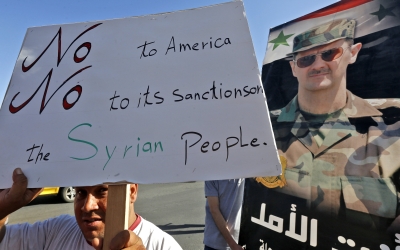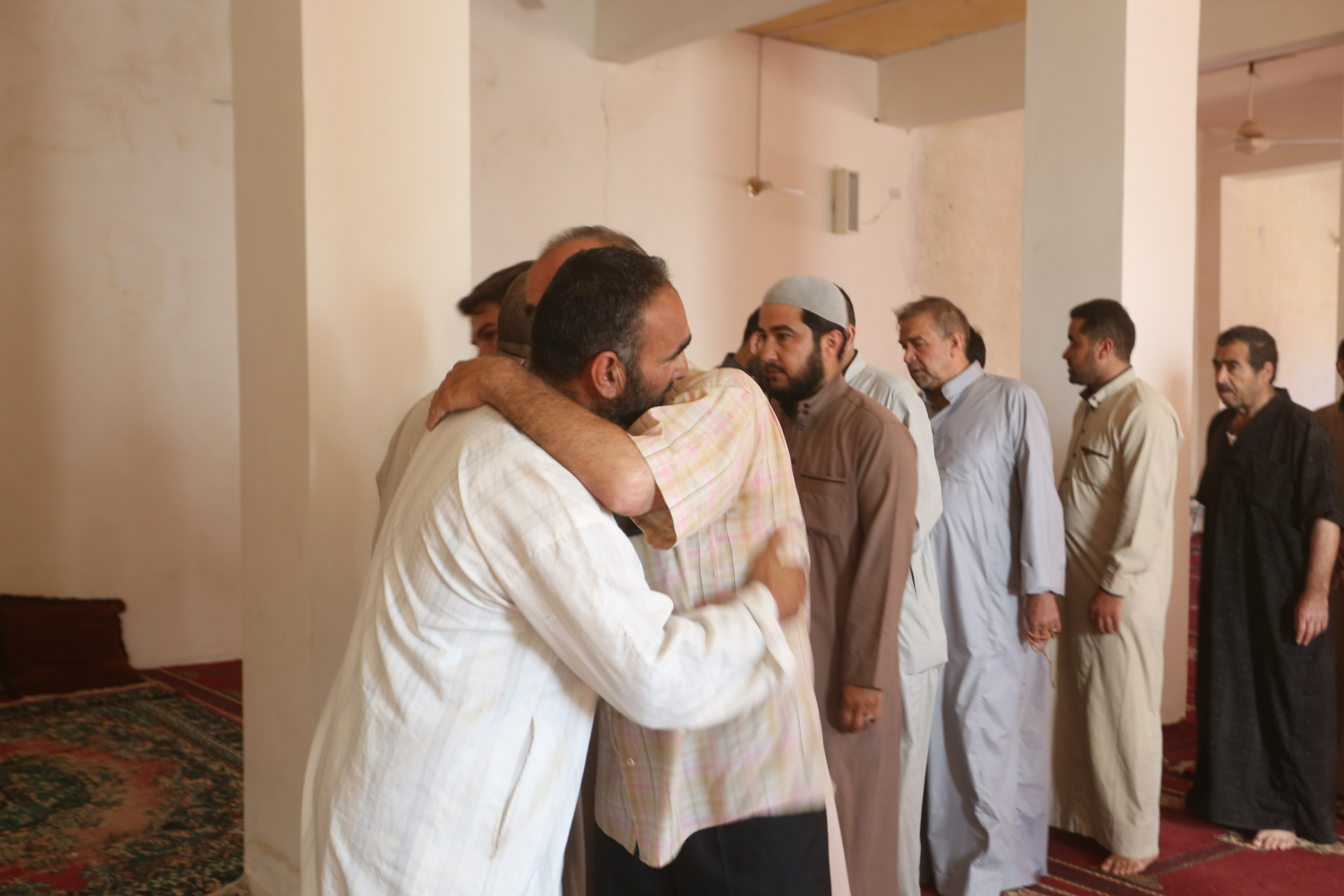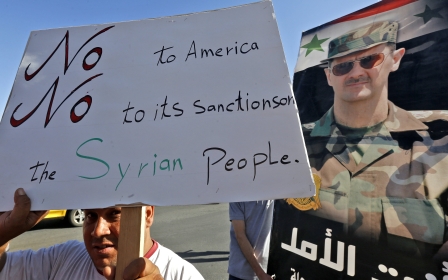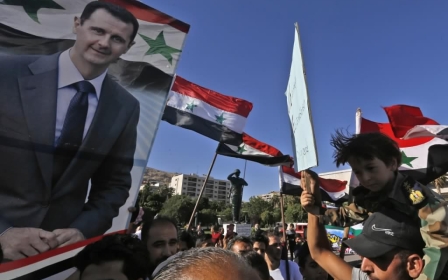'Tears for their sons': Republished Caesar photos bring fresh agony to Syria

Nadir Abbud died of a heart attack on Monday. Hours earlier, he had seen a photo online of his only son soon after he was tortured and killed.
Abbud, from Syria's Idlib province, had not received any news from his son Yunus since the Damascus government arrested him seven years ago.
Thousands of Syrians are now reliving the pain of lost relatives, thought to have been killed by their nation's intelligence services, after thousands of photos of tortured detainees first published several years ago recently resurfaced on the internet.
In August 2013, a photographer for the Syrian government military police, code-named Caesar, smuggled 53,275 photographs out of Syria, allowing families to identify those they feared had died.
The pictures showed the bodies of sometimes naked, brutally mutilated detainees, who had been held from 2011 as a result of their participation in the protests against Syrian President Bashar al-Assad.
Some of the photos were published by local media sites in 2015, as well as being posted in their entirety by some human rights organisations, though some families in Syria remained unaware of their existence.
The images have come to the fore again after the enactment last week of the US Caesar Syria Civilian Protection Act, which instigated tough sanctions against Assad and his supporters.
Following criticism of the act from some in Syria, and the attention once again brought to Caesar's actions, opposition websites republished the photos, none of which were new, to remind people why the act had been passed.
“The pictures published were all published six years ago, and there are no new pictures of the victims,” Omar Alshogre, a former Syrian detainee who gave horrific testimony to the US Senate during the progress of the Caesar Act, told Middle East Eye.
“People circulated the pictures again recently, after they spread on new websites, coinciding with the enactment of the Caesar Act,” Alshogre, who was arrested at the age of 15, added from his headquarters in Sweden, where he now lives.
'Our hopes have been completely shattered'
Numbers are increasing rapidly, but so far at least 18 families residing in northern Syria have found their sons among the pictures since last week.
The process requires close and traumatic scrutiny of thousands of pictures, especially since the features of many of the victims have changed as a result of torture and malnutrition.
Grieving villagers gathered in Salwah, north of Idlib, on Tuesday alongside Abdul Karim al-Arnos to offer condolences and prayers to three of his family members who were identified as dead among the leaked pictures.
“After searching for more than 24 hours, I found my brother's picture, and four hours later my sister found the picture of her husband, then the picture of her son," the grieving Arnos told MEE.
“They were arrested between 2012 and 2013, we suffered a lot, and we paid a lot of money to find out their fate, but we reached a dead end.”
Arnos, whose family were displaced from Altah town, east of Idlib, told MEE that he and his relatives had started their search as soon as the Caesar Act was enacted last week, and were unaware that the images were already widespread.
“We had hoped that the detainees' crisis would end, we had imagined that we would see them again, now our hopes have been completely shattered," he said.
“Their souls went up to God and got rid of the pain of torture. We ask God to take our right,” Arnos, who works as a teacher in Idlib, said.
Not knowing the detainees' fate, and holding on to the hope of their return for six years when they had actually been killed, is a situation that many have suffered.
Blackmail
Once the war broke out in 2011, Caesar's work consisted entirely of documenting killed detainees, often photographing as many as 50 bodies a day.
After smuggling his photos out of the country, Human Rights Watch (HRW) received a full set of images from a Syrian anti-government political group that had got them from Caesar.
In response to allegations that some Syrian organisations had sought to profit from revealing the photos, Caesar said last month in an interview with Okaz, a Saudi-based newspaper, that he had been subjected to severe blackmail from figures claiming to be from the Syrian opposition.
Caesar said there were more than 20 organisations and institutions falsely claiming to work as part of his team, who were collecting hundreds of thousands of dollars annually from donor countries on the pretext of supporting humanitarian causes and judicial initiatives against Assad.
He said that such organisations took advantage of his team's inability to appear publicly.
Sami, Caesar's colleague, said: “A major segment of the supporters of the Syrian opposition who wanted to take over the work on the file prepared by us, neglected our security, safety, and the safety of our families in order to reap material and non-material gains from this file.”
Following the interview, the opposition Syrian National Coalition (SNC) issued a statement in which they said that the accusations contained in the article were inaccurate.
"Any person who documents crimes is doing his duty, without becoming an exclusive agent for the victims," the SNC said.
"We formed a special team to follow Caesar's act. It is our duty to support any law that serves the interests of the Syrian people."
Indiscriminate circulation
Some local media estimate the number of people killed in the pictures at 11,000. Following a comprehensive investigation, HRW said that the pictures identified 7,000 people, each of whom had between four and five pictures taken of them.
Social media has become a stage for verifying the photos, with hundreds of activists speculating that one of the victims was prominent Syrian officer Hussein Harmoush, who defected from the Syrian army in 2011 and founded the Free Syrian Army.
'Thousands of families cry tears for their sons, because they were tortured to death or are still missing'
- Abdul Karim al-Arnos, bereaved Syrian
A local site settled the controversy when it talked with relatives of Harmoush, who denied the photos were of him.
The latest indiscriminate circulation of the images has shocked and upset many civilians and the families of the victims, provoking reactions from activists and human rights organisations, including the Syrian Network for Human Rights (SNHR), a UK-based activist group.
“Some people believed that the pictures were new, as a result of the chaotic posting of it on the media, which aggravated the suffering of families,” Fadel Abdul Ghany, chairman and founder of SNHR, told MME.
If people wanted to remind others of why the Ceasar Act has been enacted, the photos could have been reposted without identifying the individuals, argues Ghany.
“A portrait of faces may be covered or they could take permission from their relatives," he said.
“Publishing without [such restrictions] causes pain to civilians and victims' families who do not want to see their sons in this way.”
'I hope my voice reaches the world'
So far, the Caesar Act already appears to be helping to paralyse the Syrian economy.
The currency, steady at around 500 Syrian pounds to the dollar for several years, began falling last year and hit a low of 3,000 this month.
The dire economy recently triggered protests in Sweida, a generally loyalist area in the south.
Meanwhile, as the world marks the UN's international day in support of the victims of torture, Damascus continues to deny the existence of torture, secret prisons or victims.
"Thousands of families cry tears for their sons, because they were tortured to death or are still missing," Arnos told MEE.
“I hope my voice reaches the world, I ask the United Nations and humanitarian organisations to work to free the detainees, before they die and their families become bereaved.”
This article is available in French on Middle East Eye French edition.
Middle East Eye delivers independent and unrivalled coverage and analysis of the Middle East, North Africa and beyond. To learn more about republishing this content and the associated fees, please fill out this form. More about MEE can be found here.







